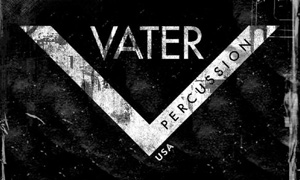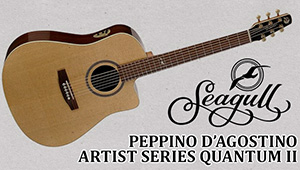 Appreciating the Jazz Experience
Appreciating the Jazz Experience
How to listen to jazz. That says a lot, doesn’t it? I’m sure many of my musician friends have their ideas, but lets take a look at it seriously. I’ll use many of my own personal experiences to share with you how you can come to appreciate the sound of jazz.
When I was first exposed to the music, it was aurally overwhelming. It almost sounded chaotic. Frantic. Sounded like everyone was going in different directions. For me, though, I found learning to appreciate jazz worked better in steps. When it was all thrown on me, I recoiled, and I was a musician at some level at the time. Considering, lets be realistic and imagine what it sounds like to those that don’t play an instrument. I realized early on that learning to appreciate jazz would take time. Like learning to appreciate a fine wine or artistic food.
I listened to a lot of early soul like Motown and early R&B like Louie Jordan. I was exposed to him in the late 60’s and learned then that early R&B was mainly instrumental. It had established the repetitive rhythms, but they were elastic and moving. Not rigid. There was also an element of swing in the pulse, but I didn’t understand it as that at the time. I started to listen to rock in the 60’s with Jimi Hendrix and drummer Mitch Mitchell and Cream with Ginger Baker. Cream was the first jam band in my view, but with Jimi and Cream I learned to FEEL collective group improvisation. The interaction of the instruments away from vocals. There were more, but these two organizations were profoundly important for me in developing my listening habits. These musicians also had a deep appreciation of jazz and blues and there were elements of these two genres in their playing. Marvin Gaye as another example was mainly a jazz drummer at the beginning. So was Maurice White of EWF. Many so-called classic soul and rock artists had jazz and blues influences. This is important because jazz evolved out of the blues. The early soul and rock opened many doors of understanding for me.
Coming into the 70’s I was introduced to jazz fusion which was basically played with very advanced rock-oriented rhythms with jazz harmony and improvisation, mainly electric and instrumental. No vocals. Miles Davis’ Bitches Brew was a rough listen at first. Whew! Didn’t get it until years later, but it was groups like Weather Report, Mahavishnu Orchestra and Chick Corea and Return To Forever’s Light As A Feather that really brought it home for me. Also, it wasn’t so unusual for soul, R&B and rock in those days to be played instrumentally. Listening to so many styles enabled me not to become dependent on hearing and feeling music in a certain way. It kept my listening ability open. When you listen to the same things over and over your ears become conditioned to hearing music played that way and consequently when you’re exposed to something else, chances are it will sound jolting or strange. Be flexible in your listening habits.
Then I was introduced to swing and be-bop from decades earlier. The music of Duke Ellington out of the 20’s and Louis Armstrong and then Charlie Parker. Wow was my first reaction. The rhythms were completely different and the improvisation was a revelation because I realized where fusion improv was grounded. The tree has to have roots. Most, if not all of the great, groundbreaking jazz fusion artists are well-studied in the bop concept, so it was then the history became important for me in understanding the progression. Again, it’s about listening to different things and not being intimidated by what I didn’t understand.
The roles of the instruments and understanding the concept of the rhythm section became significant in learning to appreciate the music. It’s the foundation. The bass was tricky for me because it was the most difficult to hear. Not as obvious and defined out of the gate, but I zeroed in on the bass because it just seemed to ground everything. That “walking” bass line thingy with a different note played on every quarter note of the bar. Different for sure, and it had a logical continuity and flow that seem to lead from one thing to the next. I learned to anticipate the melodic content of the lines and could tell when things were resolving or getting ready to change. That’s when I learned song “form.” The structure of a song. Many times when I first listened to jazz with all the improv I got lost INSIDE the song because I didn’t know where they were. A bit confusing. Once I understood the movement of the bass and how things resolved it made more sense. I knew then that songs have a specific number of bars and standard form is 32 bars and the song just keeps repeating those 32 bars for the improv. Blues form is usually 12 bars, but songs don’t have to be 32 or 12 bars.
Then the drums became the focus. I noticed the drummers’ “ride cymbal” was where most of the beat “subdivisions” were played that established the consistent time flow and pulse. In rock and soul it’s the hi-hats of the drum set that get the most subdivisions of the beat. Then I would focus on what the other hand and feet were doing with the drummer. An astonishing use of independence. Accents placed in different places to create textures. The alignment was important with the drums and bass. How they played together to ground the band. I noticed too how the drummer would control the dynamic ranges of the band playing loud and soft, but strategically placed dynamics. Not just random. Then the piano. The “chord” (two or more notes played at the same time or harmony) placement. I listened to how the left hand played the chords and the right would play melodic (single-note line successions). Or just chords if they were “comping” behind a horn like a trumpet or saxophone. I would notice all the “syncopation” (beats in between the quarter notes to not make the rhythm as straight or even, which is one of the most challenging aspects of listening to jazz). This is when you get into the realm of rhythmic sophistication.
There were all of these interesting and thought-provoking layers of things that were happening, but it all seemed to work together after I took the time to separate and see how each instrument worked inside the unit. I would listen to how the “solos” shaped and continued the melodic and rhythmic theme of the song. We call this “thematic development.” If a horn player was soloing, he would play the melodic lines that were part of a chord played at that very moment. Not just random notes, and I realized then too, the musicians HAVE to listen to each other. The notes had to match the chord and harmonic movement. There are keys, tempos, meters and such on top of everything else. In other words, there’s a LOT happening that can be overwhelming. Listening to jazz though, can develop your ears immensely. The more you listen, the more you’ll appreciate the musical intricacies. Learning to appreciate the sound of the instrument is important too. It takes years of training for musicians to develop a beautiful sound on their instrument that’s associated with them. That’s another important part of being a great musician, finding YOUR sound.
There’s so much more to this, but I wanted to share some of the things that brought me to a better appreciation in listening to jazz. Many people don’t listen to or enjoy jazz for the simple reason they don’t know how to enjoy the music or take the time to resolve what makes the music sound confusing to them. Patience is required and the desire to learn something new. Hope some of this helps. Thanks for reading my blog. – Jae





